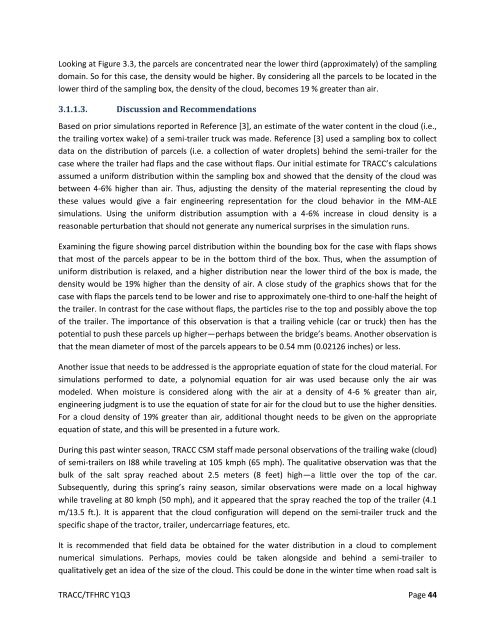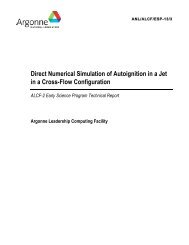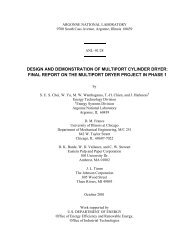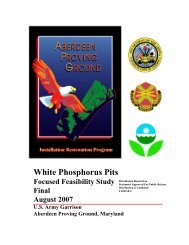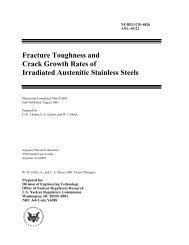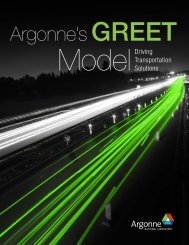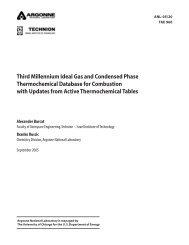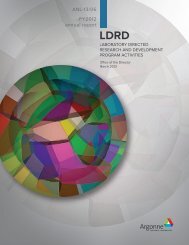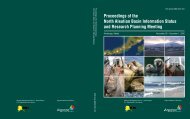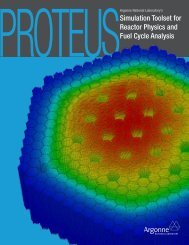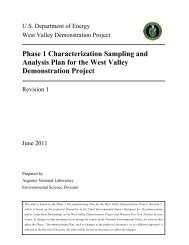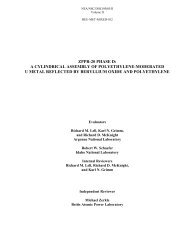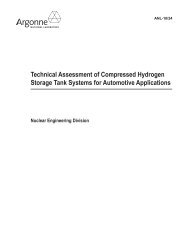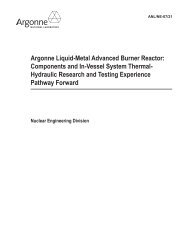Computational Mechanics Research and Support for Aerodynamics ...
Computational Mechanics Research and Support for Aerodynamics ...
Computational Mechanics Research and Support for Aerodynamics ...
Create successful ePaper yourself
Turn your PDF publications into a flip-book with our unique Google optimized e-Paper software.
Looking at Figure 3.3, the parcels are concentrated near the lower third (approximately) of the sampling<br />
domain. So <strong>for</strong> this case, the density would be higher. By considering all the parcels to be located in the<br />
lower third of the sampling box, the density of the cloud, becomes 19 % greater than air.<br />
3.1.1.3. Discussion <strong>and</strong> Recommendations<br />
Based on prior simulations reported in Reference [3], an estimate of the water content in the cloud (i.e.,<br />
the trailing vortex wake) of a semi-trailer truck was made. Reference [3] used a sampling box to collect<br />
data on the distribution of parcels (i.e. a collection of water droplets) behind the semi-trailer <strong>for</strong> the<br />
case where the trailer had flaps <strong>and</strong> the case without flaps. Our initial estimate <strong>for</strong> TRACC’s calculations<br />
assumed a uni<strong>for</strong>m distribution within the sampling box <strong>and</strong> showed that the density of the cloud was<br />
between 4-6% higher than air. Thus, adjusting the density of the material representing the cloud by<br />
these values would give a fair engineering representation <strong>for</strong> the cloud behavior in the MM-ALE<br />
simulations. Using the uni<strong>for</strong>m distribution assumption with a 4-6% increase in cloud density is a<br />
reasonable perturbation that should not generate any numerical surprises in the simulation runs.<br />
Examining the figure showing parcel distribution within the bounding box <strong>for</strong> the case with flaps shows<br />
that most of the parcels appear to be in the bottom third of the box. Thus, when the assumption of<br />
uni<strong>for</strong>m distribution is relaxed, <strong>and</strong> a higher distribution near the lower third of the box is made, the<br />
density would be 19% higher than the density of air. A close study of the graphics shows that <strong>for</strong> the<br />
case with flaps the parcels tend to be lower <strong>and</strong> rise to approximately one-third to one-half the height of<br />
the trailer. In contrast <strong>for</strong> the case without flaps, the particles rise to the top <strong>and</strong> possibly above the top<br />
of the trailer. The importance of this observation is that a trailing vehicle (car or truck) then has the<br />
potential to push these parcels up higher—perhaps between the bridge’s beams. Another observation is<br />
that the mean diameter of most of the parcels appears to be 0.54 mm (0.02126 inches) or less.<br />
Another issue that needs to be addressed is the appropriate equation of state <strong>for</strong> the cloud material. For<br />
simulations per<strong>for</strong>med to date, a polynomial equation <strong>for</strong> air was used because only the air was<br />
modeled. When moisture is considered along with the air at a density of 4-6 % greater than air,<br />
engineering judgment is to use the equation of state <strong>for</strong> air <strong>for</strong> the cloud but to use the higher densities.<br />
For a cloud density of 19% greater than air, additional thought needs to be given on the appropriate<br />
equation of state, <strong>and</strong> this will be presented in a future work.<br />
During this past winter season, TRACC CSM staff made personal observations of the trailing wake (cloud)<br />
of semi-trailers on I88 while traveling at 105 kmph (65 mph). The qualitative observation was that the<br />
bulk of the salt spray reached about 2.5 meters (8 feet) high—a little over the top of the car.<br />
Subsequently, during this spring’s rainy season, similar observations were made on a local highway<br />
while traveling at 80 kmph (50 mph), <strong>and</strong> it appeared that the spray reached the top of the trailer (4.1<br />
m/13.5 ft.). It is apparent that the cloud configuration will depend on the semi-trailer truck <strong>and</strong> the<br />
specific shape of the tractor, trailer, undercarriage features, etc.<br />
It is recommended that field data be obtained <strong>for</strong> the water distribution in a cloud to complement<br />
numerical simulations. Perhaps, movies could be taken alongside <strong>and</strong> behind a semi-trailer to<br />
qualitatively get an idea of the size of the cloud. This could be done in the winter time when road salt is<br />
TRACC/TFHRC Y1Q3 Page 44


